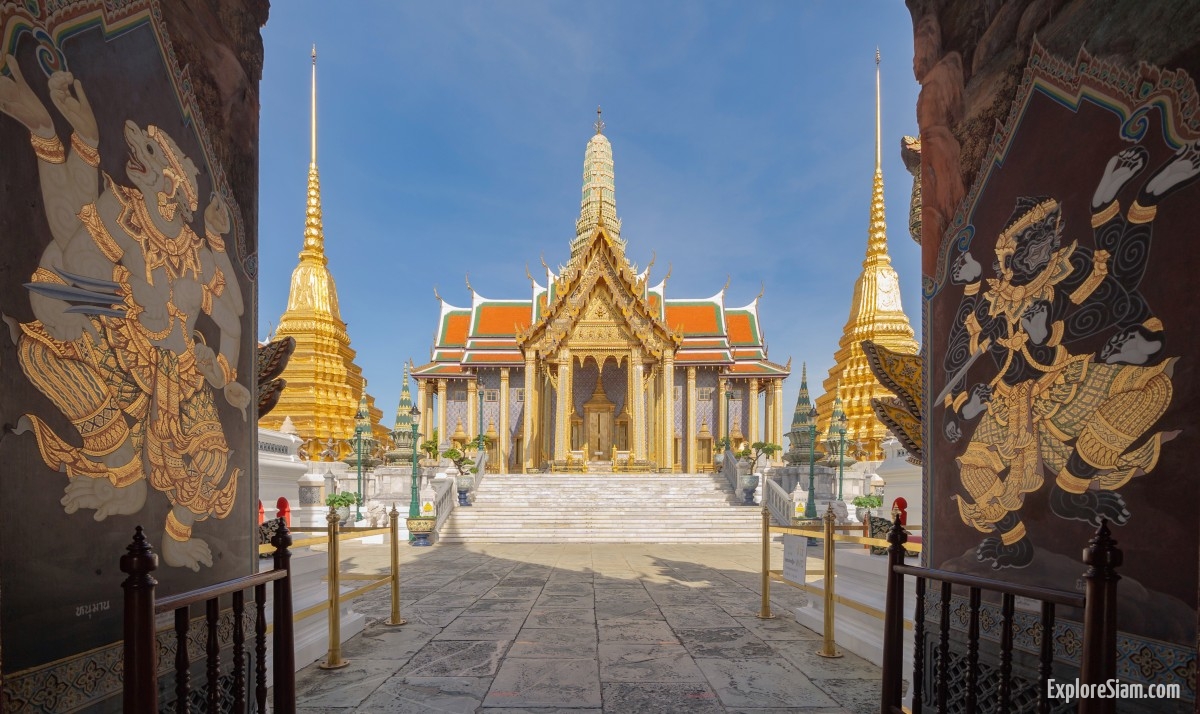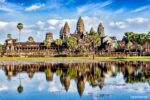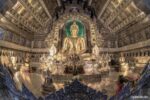The Temple of the Emerald Buddha, known locally as Wat Phra Kaew, stands as one of Thailand’s most revered spiritual landmarks. Located within the historic grounds of the Grand Palace in Bangkok, this temple is not only a significant religious site but also a symbol of national pride and cultural heritage. Its rich history, architectural grandeur, and religious importance make it a must-visit destination for tourists and pilgrims alike.
Historical Background
The Temple of the Emerald Buddha has a storied history that dates back to the late 18th century. Its construction was commissioned by King Rama I in 1782, marking the establishment of Bangkok as the new capital of Thailand. This period also saw the beginning of the Chakri Dynasty, with King Rama I aiming to consolidate the kingdom’s spiritual and political power through the establishment of grand religious structures. Wat Phra Kaew was designed to serve as the royal chapel, housing the sacred Emerald Buddha, which had been an object of reverence for centuries.
The Emerald Buddha
At the heart of the temple lies the Emerald Buddha, a statue carved from a single block of jade, despite its misleading name. This statue, which stands at about 66 centimeters tall, is considered the palladium of Thai society. Its origins are shrouded in mystery, with various legends attributing its creation to different ancient periods and regions, including India and Sri Lanka. The Emerald Buddha was first discovered in 1434 in Chiang Rai, northern Thailand, and over the centuries, it traveled through several Thai cities, including Lampang, Chiang Mai, and Vientiane in Laos, before finally being enshrined in Bangkok.
The statue is adorned with seasonal costumes that are changed three times a year by the King of Thailand in a solemn ceremony. This tradition symbolizes the changing of the seasons and is a deeply revered ritual that underscores the Emerald Buddha’s significance in Thai culture and religion.
Architectural Splendor
Wat Phra Kaew is a masterpiece of Thai architecture, reflecting the grandeur and intricate craftsmanship typical of the Rattanakosin period. The temple complex is a blend of traditional Thai and contemporary styles, featuring elaborate decorations, vibrant murals, and ornate structures. The central building, known as the Ubosot or ordination hall, houses the Emerald Buddha and is the focal point of the temple.
The Ubosot is surrounded by eight boundary stones, known as “Sema”, which demarcate the sacred area. The exterior of the hall is adorned with gold leaf and colored glass mosaics, creating a dazzling visual effect that highlights the temple’s sacredness. The roof is decorated with multi-tiered gables and chofahs (ornamental finials), which are typical features of Thai temple architecture.
Symbolic Murals and Statues
The walls of the temple complex are adorned with detailed murals that depict scenes from the Ramakien, the Thai version of the Indian epic Ramayana. These murals are not only artistic masterpieces but also serve as moral and spiritual lessons, illustrating the eternal struggle between good and evil.
The temple grounds are also home to numerous statues and mythical creatures, each with its own symbolic meaning. The statues of the giant Yakshas, or guardian demons, stand at the entrances, warding off evil spirits. The Garuda, a mythical bird-like creature that serves as the mount of the god Vishnu, is another prominent figure in the temple, symbolizing royal authority and protection.
Religious Significance
Wat Phra Kaew is not just a historical and architectural marvel; it is a living religious site that plays a central role in the spiritual life of Thai people. The temple is a place of worship, meditation, and pilgrimage, attracting thousands of devotees and tourists each year. The Emerald Buddha is believed to provide protection and prosperity to the kingdom, and its presence reinforces the connection between the monarchy and Buddhism.
Throughout the year, Wat Phra Kaew hosts numerous religious ceremonies and festivals, the most significant being the annual Songkran Festival, the Thai New Year. During this festival, the Emerald Buddha is bathed in water, and the temple becomes a hub of religious activities and celebrations.
Visiting the Temple
A visit to the Temple of the Emerald Buddha offers a profound insight into Thai culture and spirituality. The temple is open to the public, but visitors are expected to adhere to strict dress codes and etiquette, reflecting the site’s sacredness. Modest clothing is required, and footwear must be removed before entering the temple buildings.
The temple’s serene and contemplative atmosphere provides a stark contrast to the bustling streets of Bangkok. Visitors can spend hours exploring the intricate details of the architecture, the vivid murals, and the serene gardens, each element contributing to the overall sense of peace and reverence.
Preservation and Legacy
The Thai government and various cultural organizations are committed to preserving Wat Phra Kaew as a national treasure. Restoration projects are regularly undertaken to maintain the temple’s structural integrity and artistic beauty. These efforts ensure that future generations can continue to appreciate and revere this iconic symbol of Thai heritage.
In conclusion, the Temple of the Emerald Buddha is a testament to Thailand’s rich cultural and religious traditions. Its historical significance, architectural splendor, and spiritual importance make it a cornerstone of Thai identity. Whether one visits as a pilgrim seeking spiritual solace or as a tourist marveling at its beauty, Wat Phra Kaew offers a unique and unforgettable experience.
Website: www.royalgrandpalace.th





